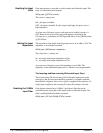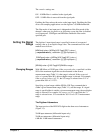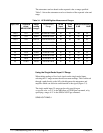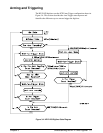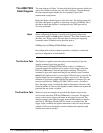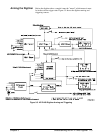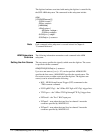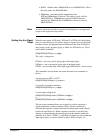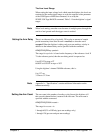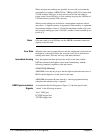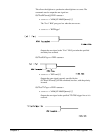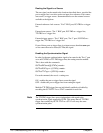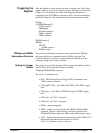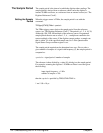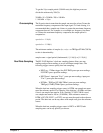
Note For arm source TTLTRG<n >, the digitizer arms on the negative-going
edge of the signal. For arm source ECLTrg<n >, the digitizer arms on the
positive-going edge. These sources are not affected by the
ARM:STARt:SLOPe command.
Arm Window
Boundaries
The boundaries of the window are set by the voltage levels of
ARM[:STARt]:LEVel:POSitive and ARM[:STARt]:LEVel:NEGative.
When ARM[:STARt]:LEVel:POSitive specifies a level that is greater than
ARM[:STARt]:LEVel:NEGative, the digitizer is armed when the input
signal exits the defined window. When ARM[:STARt]:LEVel:POSitive
specifies a level that is less than ARM[:STARt]:LEVel:NEGative, the
digitizer is armed when the input signal enters the defined window.
Setting the Arm Level When the arm source is INTernal1 or INTernal2, the level of the input
signal at which the digitizer becomes armed is set with the commands:
ARM[:STARt]:LEVEL[<
n
>]:NEGative <
voltage
>
This command sets the voltage level on the specified channel that, when
reached by a negative-going input signal, arms the digitizer.
ARM[:STARt]:LEVEL[<
n
>]:POSitive <
voltage
>
This command sets the voltage level on the specified channel that, when
reached by a positive-going input signal, arms the digitizer.
Figure 3-6. Arm Window Boundaries
116 Understandin
g
the HP E1429 Di
g
itizer Chapter 3



